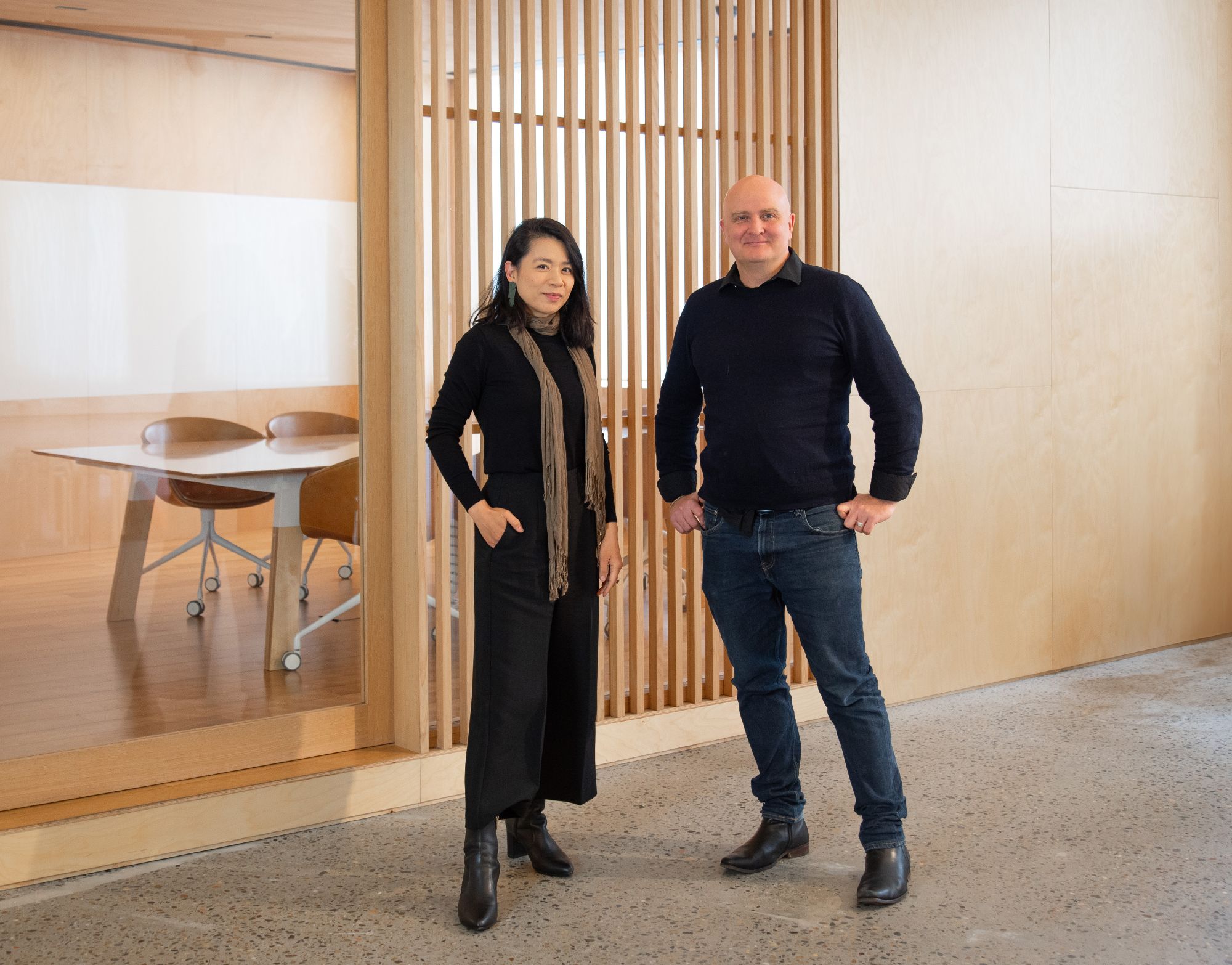
Paper examines ‘sobering’ impact of power and privilege on architecture careers
Paper examines ‘sobering’ impact of power and privilege on architecture careers
Share
A new paper from national architecture practice Hayball and the Champions of Change movement examines the impact of workplace power dynamics and privilege on career progression within the Australian architectural industry.
‘Power and Privilege’ is an initiative of the Champions of Change Coalition, a globally recognised group of over 260 members across diverse business sectors committed to achieving gender equality, advancing more and diverse women into leadership, and building respectful and inclusive workplaces for the future.
Hayball principals Bianca Hung, Kit Ku and Dave Tordoff participated in the three-year-long research project in collaboration with several notable architecture practices – including SJB, DesignInc, DKO and Bates Smart – together forming the Champions of Change Architecture Group, convened by Dr Jess Murphy.
“Leadership’s personal understanding and willingness to challenge formal and informal power dynamics is a key step in identifying opportunities to accelerate gender equality for most organisations,” Murphy says.

The background to the paper
Informed by the 2020 Executive Survey of architects conducted by the Champions of Change Architecture Group, the 2001-2021 Parlour census and further insights from more than 150 senior leaders in the industry, the paper examines both the barriers and opportunities in career pathways within Australian architecture practices. It aims to form a better understanding of power and privilege dynamics within the studios, systems and structures of the profession, empowering practices to make meaningful, informed change.
The paper defines ‘privilege’ as:
“The advantage, benefits and power that individuals or groups are granted (rather than those which they ‘earn’), because of their relative social position or identity. Privilege is relational – an individual can be both privileged and marginalised at the same time.”
Armed with this information, Ku says “we can and should” take action to ensure more equitable access to leadership pathways for all employees.
“Our findings open a new line of thought for the industry, asking ‘how can we disrupt and reshape barriers in career pathways that will create lasting change?’” she says.
Findings from Power and Privilege
Findings show the Australian architecture industry today has a disproportionately high representation (70 percent) of men, and men over 50 years of age are nearly twice as likely to be equity partners.
Across all genders, 86 percent identify as being of Caucasian descent and are 3.4 times more likely to be equity partners. People of Indigenous descent make up less than one per cent of the workforce.
The research also explored how class intersects with gender, race, disability, skills and location in the creative industry.
The odds of being an equity partner were 2.3 times greater for participants with family connections in the industry, independent of participant demographic factors.
According to the paper, privileged men were 3.4 times more likely to be working in the creative sector than women from non-privileged backgrounds. Participants who had more than 20 years of experience were four times more likely to be involved in all major business decisions.
“The findings offer a sobering insight into the landscape of our profession,” Hung says.
“How can we design for our diverse society, if we do not reflect this as an industry ourselves? The paper, combined with the ongoing work of the Champions of Change Architecture Group, calls for a comprehensive review of internal policies within our industry today.
“We must take an active role in measuring our diversity footprint as individual practices, committing to strategies to improve the gender and inclusivity mix, while performing frequent reviews and importantly asking for feedback from people that make up organisations.”
Recommendations from the paper
Power and Privilege makes clear recommendations for practices to enable this accessibility for collaboration and diverse culture and gender involvement, especially for pathways into decision-making roles, including:
– providing constructive feedback
– including graduates in a variety of project phases
– offering clear mentorship and professional development pathways
– understanding the needs of parents in relation to childbirth and parental leave and better shaping policy with respect to this, and
– reviewing training systems and procedures to create learning environments sensitive to varied learning and working styles.
Hayball principal Dave Tordoff recognises the importance of work like this at a practice level to effect change, but he says positive and effectual change “starts with individuals”.
“It is only by recognising privilege in ourselves that we can begin to acknowledge and address how to take effective action – providing equitable access to leadership pathways and individual success for all employees,” Tordoff says.
“Power dynamics are sneaky. Without conscious awareness they proliferate and maintain the status quo and moving forward we have a responsibility to recognise the status quo as unacceptable.”

Hayball acknowledges its own shortcomings
Ku acknowledged that Hayball – which has a 16.7 percent median base salary gender pay gap (higher than the target range of five percent) according to data recently made public by the Workplace Gender Equality Agency (WGEA) – has more work to do. However, she recognised the significant work undertaken to date together with the Members of the Champions of Change Coalition and in line with WGEA initiatives.
“We have achieved a lot in recent years around gender equity, including strong women’s representation across the business and in our leadership cohort,” she says.
“Achieving this ownership milestone is just one indicator of our board’s ongoing commitment to gender equity.”
Read the Champions of Change Power and Privilege discussion paper here.
View the gender pay gaps at large Australian architecture firms.















